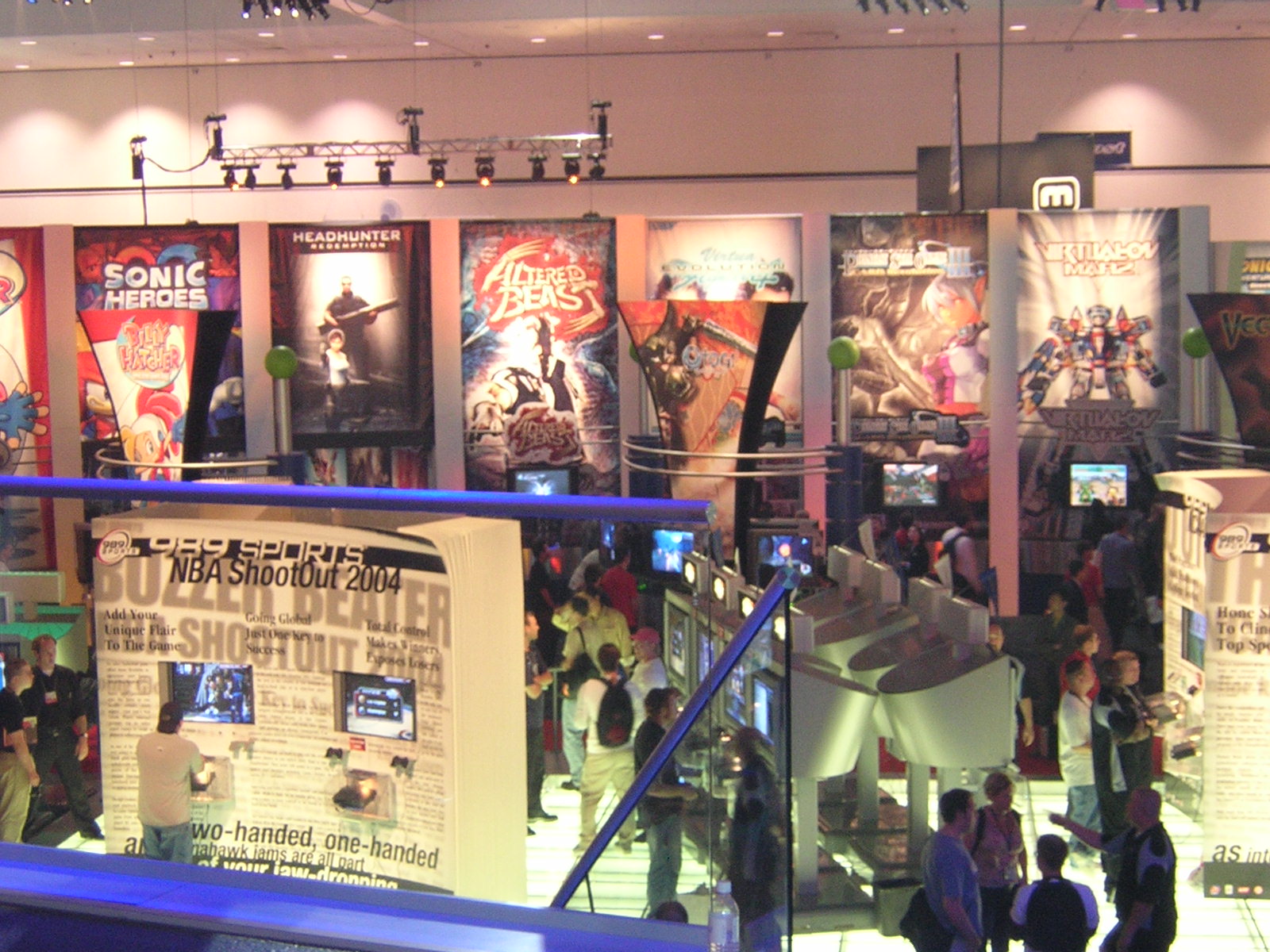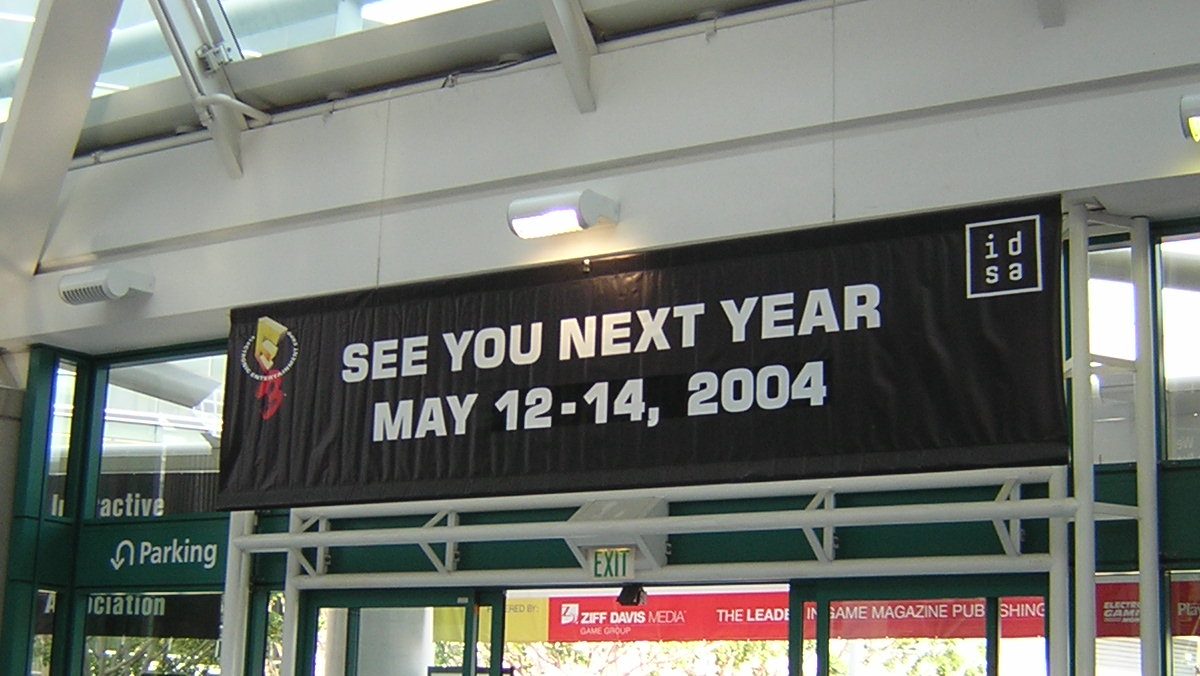Between 2003 and 2019, I went to E3 15 times, and developed a complicated relationship with the event.
From 1995 to 2019, E3 was the gold standard for American video game shows. Particularly in those first few years, it had a reputation among nerds like Willy Wonka’s Chocolate Factory. Earn your way in somehow and you’d come out with firsthand knowledge of the next year’s video games and a bag full of exclusive convention gear.
E3 2003 was my first time at the show, as a thoroughly overwhelmed stringer for a British magazine. At the time, Atari was hyping up Enter the Matrix with a band of mock protesters stationed around the venue. They all had signs that accused any- and everything around them, including E3 itself, of not being real. I was already having a hard time believing I was actually at E3, and that protest didn’t do me any favors.

That first year is still a blur. I remember playing an early beta of Starcraft: Ghost, right before it vanished from the public eye. At another point, I got chased down like a dog by a guy with a demo for the underrated Metal Arms: A Glitch in the System. The rumors I’d heard about convention giveaways were mostly that, just rumors, but I did meet a lot of people who I’d previously only known online. E3 was always a flashpoint for the nerd world, even back during Web 1.0.
What was funny was that once I was there, I discovered it wasn’t actually that hard to get in. E3 was a trade show back then, so you theoretically had to be a video game industry professional to get a badge, but that implicitly covered a lot of ground. I ran into dozens of people who were no closer to the industry than being a clerk at a GameStop in the middle of nowhere. My con buddy in 2003 qualified for the show by virtue of being a reporter for a video game news site that he’d made up on the spot. It never existed, and nobody ever checked.
Come to think of it, that’s a useful metaphor for E3 in its entirety. The wheels didn’t come off this bus. It never had wheels. E3 was all momentum, no steering, almost from the moment I showed up.
To a certain extent, the history of E3 as an event mirrors the history of the American games industry. The 2000s were its awkward early adulthood, its party years, where a lot of companies used their press outreach as an excuse to get drunk and spend a lot of money. In 2003, I attended an nVidia mixer that abruptly became a Smashmouth show; a few years later, I was at Sony’s post-E3 event when, without warning, a Jane’s Addiction reunion concert broke out.

Rightly or wrongly, I always think of the 2007 show as where the party stopped. That was the year where E3 got kicked out of the Staples Center, which scattered the event across a dozen hotels in Santa Monica. One day of the show ended with a mock “funeral” for E3 as a tradition on the California beachfront, held by the now-defunct publisher Gamecock. I was there, which means I’ve now stuck around this business long enough to see E3 die twice.
On the whole, E3’s always struck me as a show with an identity crisis. In the 2000s, it was trying so hard to be cool. This was the “booth babe” era, at the tail end of the PS2’s run. No one quite knew what they were doing yet, as exemplified by the exhibitors at Kentia Hall in the Staples Center. That was E3’s designated Island of Misfit Toys, full of weird Russian military simulators and garish neon PC case mods. If you were ever there, you know.
After its first funeral, E3 stayed at the Los Angeles Convention Center for the rest of its run, and its organizers at the ESA made moves to clean it up a little. At that point, which coincided with the start of the PS3/360 era, E3 became a more sober experience. It was still a decent place to network and check out the next year’s games, as well as the occasional infamous piece of vaporware like the Phantom, but a lot of the party atmosphere was gone.
In retrospect, what doomed the show wasn’t COVID, but had more to do with the rise of influencers. Once YouTubers and streamers became a more crucial part of games’ marketing outreach, right around 2015-2016, the ESA started trying to transition E3 from a trade-only event to a nerd convention. It didn’t work out; the expo halls got too crowded to function, with hundreds of people who’d only shown up to score stuff to put on eBay. All the real business ended up having to be held in the meeting rooms on the upper halls of the convention center, or worse, at a restaurant or hotel somewhere nearby.

I was having less fun every year I attended, right up until the 2019 show when the ESA managed to leak all the attendees’ data. At that point, I’d already decided to make every effort to skip the 2020 show, and then COVID put an end to the whole mess.
A lot of people I know are mourning E3 this week. Going there was a rite of passage, especially if you were in the media, and it offered a lot of opportunities to meet games-industry pros from all over the world. At the same time, however, E3’s time had thoroughly passed even before the pandemic; it was too loud and stupid for its own good, and had lost sight of why it mattered.
There would be some real value to an E3 successor, if somebody decides to resurrect the practice or the name. In my experience, more indie studios right now are distributed than local, where any given game is effectively an international production. A big industry networking event, hosted and subsidized by a big organization like the ESA or IGDA, could have a positive impact on the next generation of game developers, and that’s the value that E3 used to bring to the table. As it evolved alongside the games industry, though, E3 simply lost its way.






Published: Dec 14, 2023 03:55 pm